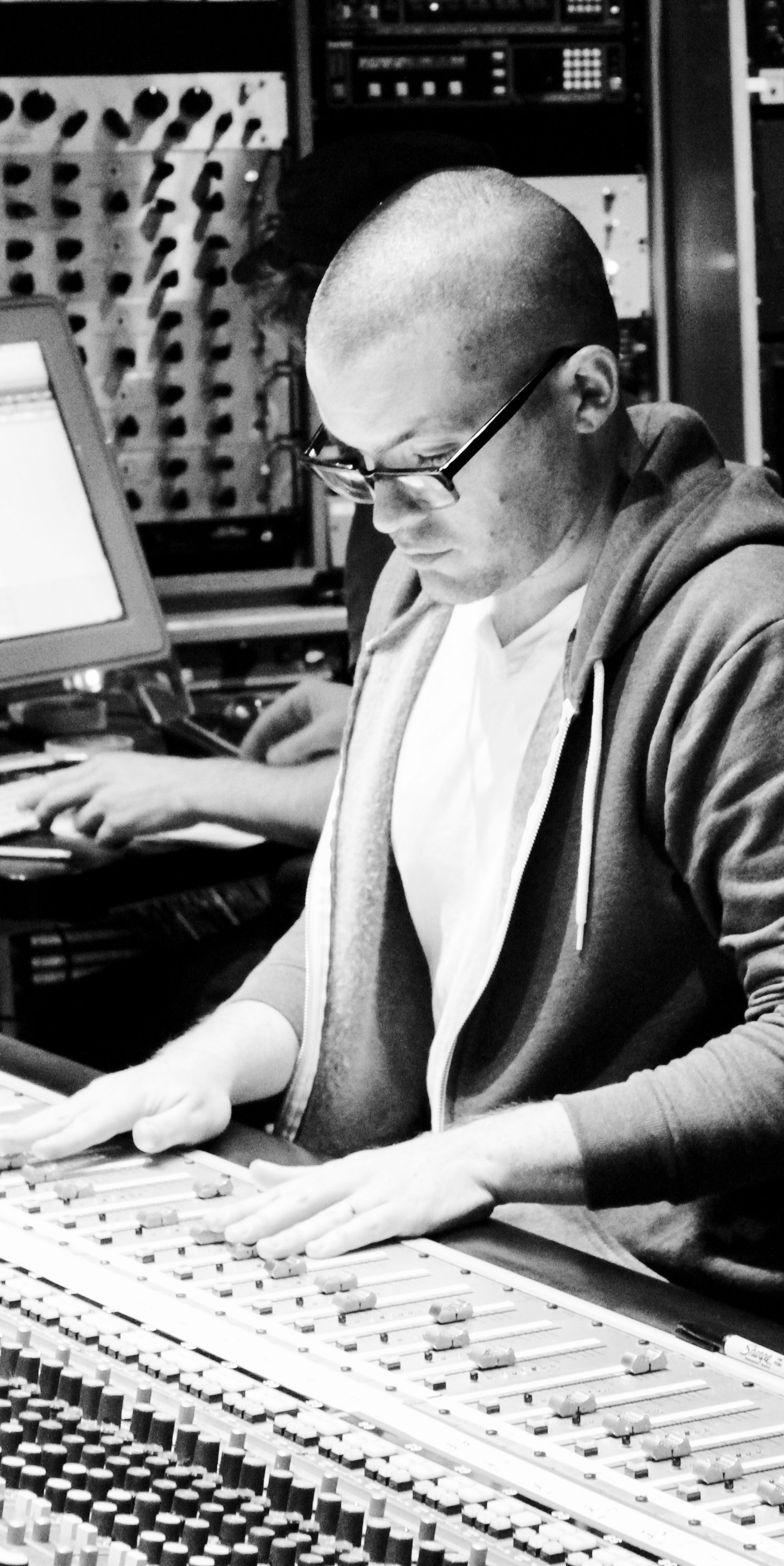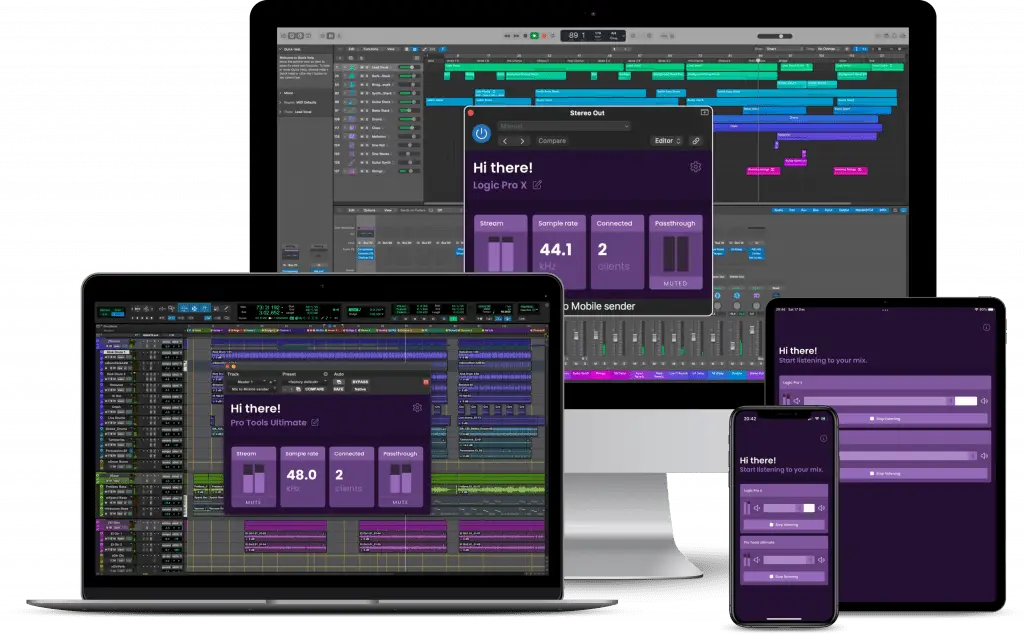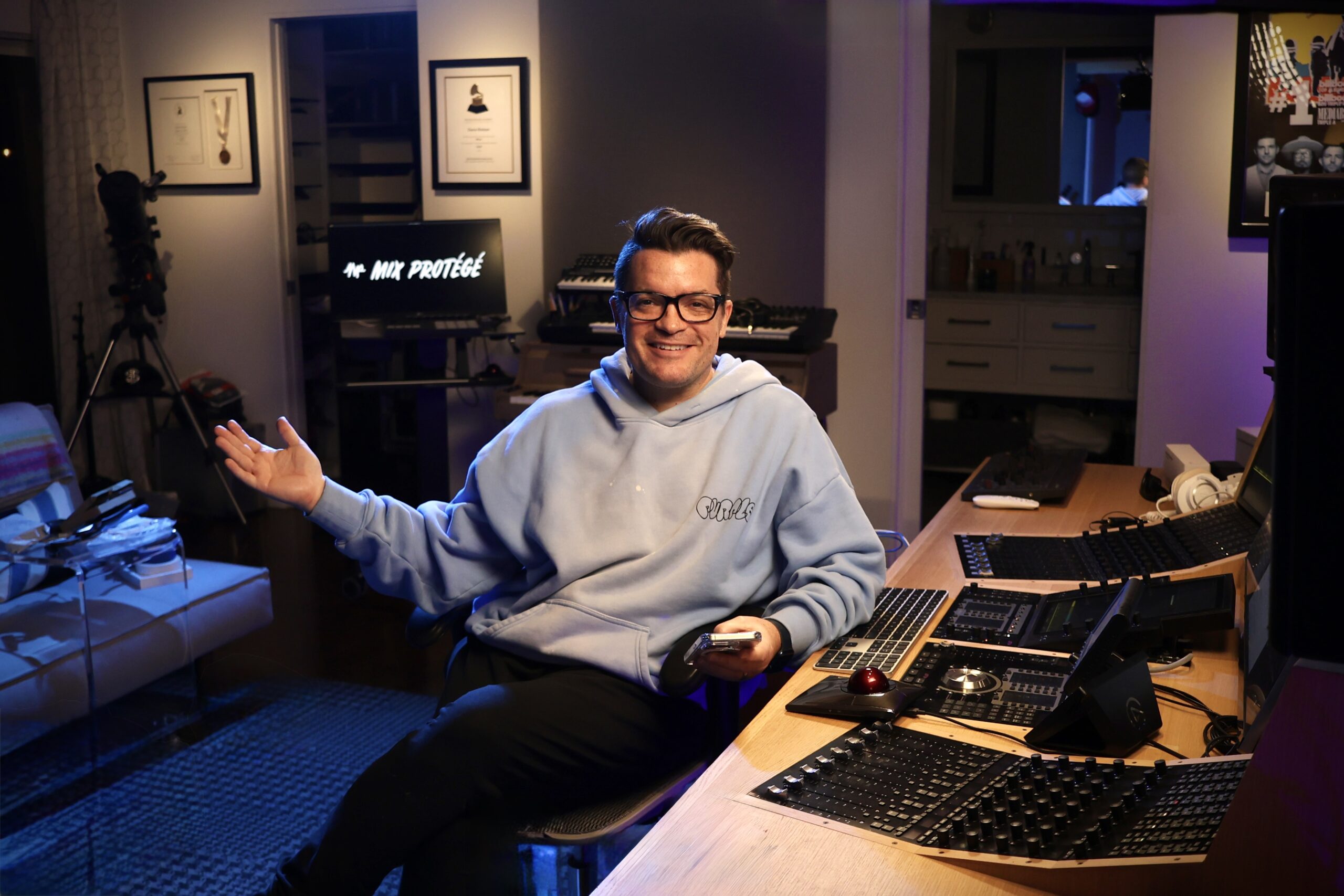Forum Replies Created
-
Woah, amazing @smoothygroove – You rule!!! Thanks for sharing these great freebies – I can’t wait to check them out!
-
This Mix To Mobile $39 app looks pretty sweet as well!
https://soundondigital.com/products/mix-to-mobile/
soundondigital.com
Mix to Mobile - Sound on Digital
Stream audio from your DAW to your mobile device. Mix to Mobile makes it easy to listen to your mix on your mobile device. You no longer have to bounce your project and send it to your phone.
-
“Radioshack Relics” LOLOL
Fantastic question, @shimmerisland, that got me thinking of an awesome solution I’ll be using all the time now – thanks! Unfortunately, it’s not free but it IS freaking cool. Here’s a quick, scrappy video demonstrating my new fav “small speaker” mixing hack!
[Sorry my audio got screwed up and you’re hearing Pro Tools output and not the iphone speaker as intended, but trust me- it works and sounds great coming right out of the phone!]
https://vimeo.com/mixprotege/mixing-on-iphone-with-source-nexus?share=copy
-
Jesseeeeee!! This is such an excellent question I can’t wait to answer (cause I love this stuff and think about – and experiment with – all the time). I’ll probably circle back to this post when I have more time to elaborate, but a quick basic answer from my personal perspective would be:
- I love multi-mic acoustic guitar, especially when the guitar is the main focus of the mix/performance. Usually I’m using multiple mics to a) capture a bigger, fuller-frequency picture of the instrument, and b) so I can pan the mics across the stereo field for a wider “immersive” vibe. As such, I’m often choosing mic placements that are fairly tonally balanced, panning them, bussing them to a stereo aux input (or recording them directly onto a stereo track if I’m feeling really confident and/or lazy lol), and then EQ-ing the combined signal as one unified guitar sound.
- Sometimes tho I will touch up individual mics to remove resonant frequencies or hi-pass a mic with sub rumble etc. before they get summed together on the “Ac Gtr” stereo aux input channel for further EQ/compression/etc.
So I guess my short answer is: I do both. Sometimes. But also, not all the time. Easy right? 😂
I will say tho, that putting one mic on the fretboard for left hand definition and one mic on the body for right hand body could be more effective when summed together in mono rather than stereo (like I do often with upright bass) since, as you mentioned, the two parts of the instrument sound tonally pretty different from one another. If you were to pan those mics wide it might feel weird with all the low end body on the left speaker and relatively no body on the right speaker.
If you were, however, to put a stereo mic placement (XY, Blumlein, ORTF, etc) in front of the guitar near where the neck meets the body and back a foot or more, you’ll still be getting the best of both worlds (body from the body of the guitar, clarity and definition from the neck) but the sound will be more equally balanced in each mic since the two mics are placed right next to each other (also called a “coincident pair” of mics) so that the full combined frequency spectrum of the instrument (neck and body) arrives at the two mics at exactly the same time, which makes for a very balanced Left/Right image … if that’s what you’re going for.
There are so many other fun ways I like to multi-mic acoustic guitar too, which would be easier to demonstrate visually/audibly … maybe I’ll make a video series…
Meantime, there are those two vids on the Mix Protégé Instagram page about exactly these techniques (which I know you’ve already seen, but for anyone else reading this who might be interested ….)
Aaaaand, as usual, my “short quick answer” turned into a long one! haha. I can’t help myself. I love this stuff!! Keep us posted on your acoustic guitar mic’ing experiments!
-
Hey, @lucastlee! What an excellent question. I’ll respond briefly here with my practical “take” on EQ differences rather than diving deep into a technical answer. I’m also going to assume you’re referring to EQ plug-ins rather than analog hardware EQ units.
Here are a few possible reasons as to WHY:
1. Physical model: When plug-in manufacturers attempt to capture the sound of, say, a vintage Pultec EQP-1A (one of my favorite musical EQs), the resulting plug-in’s “sound” is derived from a specific hardware unit; and hardware units can vary in tone (and electronic components) from year to year, model to model, and serial number to serial number, especially as they age. This is one explanation for why a Waves Puig-tech might sound different from an Avid or UAD Pultec, even when they’re all EQP-1A models.
2. Algorithms, processing, and math: Each manufacturer will employ different means by which they recreate a familiar analog sound or circuit into a digital plug-in, which can also create sonic differences for the end-user to notice and compare.
Here is my philosophy and WHAT I do about it:
1. “huh … interesting.” I notice these differences all the time.
2. Move on. 😂 I, long ago, took a decidedly “meh” approach to gear paranoia and elitism with regard to hardware and software. Arguing over 1176 revs is so not my style and utterly pointless to me. You won’t find that kind of attitude here on Mix Protégé. There’s already plenty of that whining on Gearspace (see below).
3. I’ve got LOTS of options to choose from in my plug-in EQ collection. Several versions of the EQP-1A by different brands, several Neve and SSL recreations that are identical by model number but differentiated by plug-in manufacturer. I try them ALL, and honestly for the most part I LOVE them all! But choosing my “favorites” will come down to a few simple considerations:
- It sounds great and operates as expected
- It loads fast in my DAW and isn’t a processing-power-hog (bonus points if it’s available in AAX DSP, since I’m on a Pro Tools HDX system)
- It has some extra features that make my life easier and/or routing more flexible, especially for dynamics processors — like a mix/blend knob, key input, input/output control, sidechain filter. Even when those features are not true to the vintage analog version, they sure make my life easier and are welcome additions in a plug-in emulation.
Lastly, FWIW, here’s ….
My process for any EQ -digital or analog- and any other effect. Err, scratch that, this is pretty much my process for MIXING ANYTHING:
- Have desired sound in brain/imagination
- Pick tool that will get me there quickest (with zero F$%#s given about the brand name of the tool)
- Experiment with tool until the sound in my brain is coming out of the speakers
- Repeat steps 1-3
Hope this helps you (and anyone else reading), and sorry, I guess it wasn’t so “brief” after all! 🤓
-
Yeah man!! Right?… pretty amazing tool for reclaiming valuable headroom, especially when a bit of crunch on the source is desirable too. I’ve come back to this plugin a number of times since making this vid to use it on various sources. Super cool!
-
Ah, didn’t realize the free version is mono. Tho, when listening on your phone speaker that wouldn’t be such a dealbreaker. I know many phones have stereo speakers now, but once it’s arm’s length from your face it’ll all sound like a mono source anyway … very similar to my Realistic speaker setup: those two speakers can reproduce stereo sound, but I intentionally push them close together to make it essentially a mono sound source in my room.
-
Ah! Yes – LA-2A much better on sustain-y gentler things like vocals and bass than on percussive things like drums and plucky things like nylon guitar. (Sometimes can be good tho on strummy acoustic guitars).
-
Ahhhh, nice! Didn’t realize there was a vocalist occupying that left-side space in other parts of the vid – makes perfect sense!
And I bet it’s the LA-2A … it sounds like that compressor’s attack/release profile. I can explain more in our upcoming 1-on-1 sesh, and maybe can make a lil “acoustic guitar compression” video later this week for the MP site here.
With the LA-2A specifically I would say the only “setting” that really matters is that gain reduction meter (i.e. how many -dB of compression is happening). For plucky instruments like nylon guitar with fast transients and relatively short sustain that LA-2A can start to sound pretty noticeable due to it’s fairly fast attack (10ms) and slow release (60ms for 50% of the release, and anywhere from 1 to 15 seconds for the rest). While I wouldn’t consider 60ms a “slow” release time, it’s that 2nd 50% of the release (1-15 seconds) that can start to sound “grabby” on certain sources.
Muuuuch easier – and more FUN – to demonstrate with video and audio than to type out meaningless numbers here hahaha. But you know I get all excited and can’t help myself. AND I want to assure you what I heard on your recording is subtle and probably only noticeable by engineer-dorks like me 🤓. But since this is a perfect space to nerd out about such things I thought I’d indulge myself haha.
Happy to go into more detail with a followup video if you or anyone else here is interested!
-
Heavy breathing .. lololol. #realtalk
Love these additions, @Jon_Plett! And it’s a GREAT tip to use different guitars and/or mics to keep those overdubs from sounding too “same-y same same”. If that’s not possible and there is only one player playing one guitar on the same mic on all overdubs, I’ll often look for other ways to switch things up, such as:
- alternate tuning
- alternate chord positions (bar chords vs 1st position for example)
- capo
- alternate mic position
And, man, I’m soooooo glad the Natural Vocal Production course has been helpful, brother!
-
@Martyn (aka James)!!! Amazing first post and so glad you’re here – you are such bright, creative, musical light!! I’m gonna bullet point a few quick musings of my own:
- Fantastic video share of your classical guitar recording. Alex Park sounds excellent. I can’t wait for my classical-guitar-wiz brother @Kwas (aka Casey Nielsen) to check this out too!
- I love ORTF – great work! Where can I get one of your 3D printed ORTF clips?? (I’m usually guess-timating and eyeballing my 17cm and 110-degrees 😬)
- Ideas for your next stereo classical guitar recording: 1) try the mics positioned more centered on the body of the guitar — perhaps the center of the ORTF somewhere around where the fretboard meets the body so that the resulting recording has the guitar more centered in the stereo field (currently it feels a bit right-side heavy); 2) try less compression – or a faster release time. I bet it’s the limiter in your Zoom recorder I’m hearing? Just curious! But these are just minor ideas of things to try … you’re doing GREAT!
- Yes! Love those Octava MK012’s! Excellent cost-effective lil mics. I’ve owned my pair for over 20 years.
Also, two more general points for the whole community:
- Don’t ever be afraid to contribute your own thoughts, feelings, and constructive suggestions for each other here on this platform! Very sweet of you and @Jon_Plett to high five what I already wrote (🙏🏻) but I don’t want my personal thoughts and discussions stifle any of your own! Keep chimin’ in, yall! It helps everybody, is more fun that way, and keeps Mix Protégé a vibrant community, not just a “Dana echo chamber” lol.
- EVERYONE got a personalized call-out in the Friday Fader this week! No one person was put on blast …. EVERY person was put on blast! Mwa haha ha ha haaaaa. Just trying to inspire my favorite folks (you all!) to pop by, share some knowledge, ask a question, encourage some members, and have some fun!
🤓
-
Haha – my pleasure, brother!!
-
Sure thang!! 🙏🏻
-
My pleasure, man!
-
Dana Nielsen
AdministratorOctober 23, 2023 at 1:52 pm in reply to: Audio Interfaces (Thunderbolt 3 vs USB-C, DUO vs DUO DSP)DUDE – u are set!! Very exciting!





Social Media